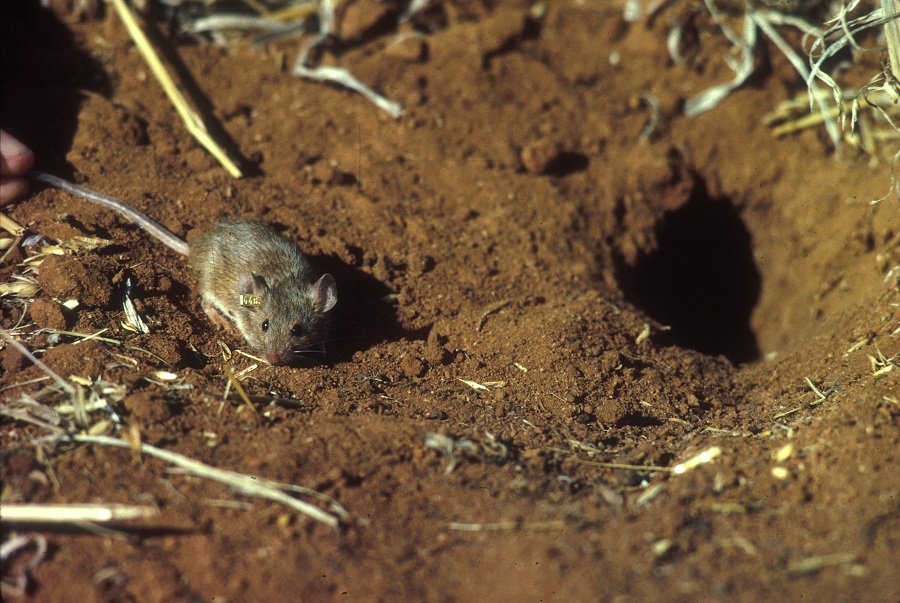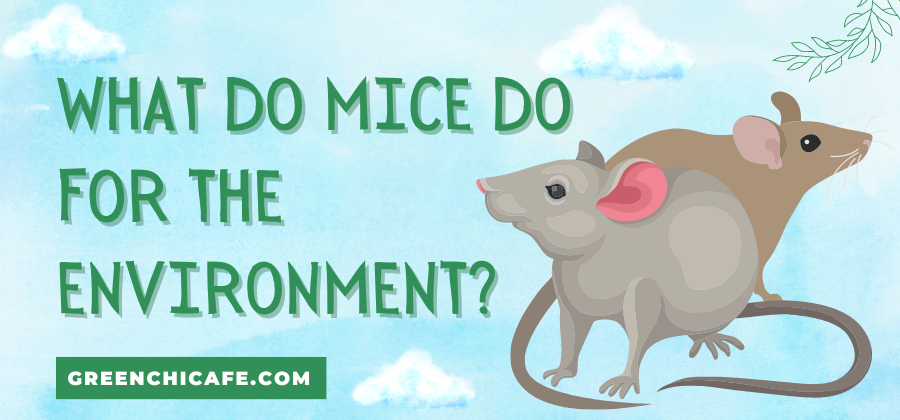Mice play vital ecological roles by dispersing seeds, aerating soil, distributing nutrients, and serving as prey.
Though considered pests, mice provide services that enrich soils, spur plant growth, spread fungi, and sustain a diverse array of predators.
Read on to learn more about the surprising environmental benefits of mice.
What Do Mice Do For The Environment?

Mice provide food for predators, disperse seeds and spores, host parasites, and promote nutrient cycling through their burrowing and foraging behaviors.
They influence species interconnectivity and ecosystem structure across diverse habitats as prey and ecosystem engineers.
Key Points
- Mice serve as prey to sustain a wide array of mammals, birds, and reptiles.
- They disperse plant seeds and fungal spores by caching food, and waste, and digging burrows.
- Mice digging aerates the soil, redistributes nutrients, and facilitates water drainage.
How Do Mice Affect Ecosystems?
As frequent prey, mice provide essential food for a broad range of predators from hawks to snakes.
This energy transfer supports food chains.
Mice also disperse seeds and spores that expand plant populations. Their burrowing aerates soils and redistributes nutrients.
And mice host parasites that require multiple hosts to complete life cycles.
How Do Mice Influence Plant Communities?
Mice disperse seeds by caching food stores and through waste elimination.
This facilitates plant propagation and colonization of new areas.
Mice also transport spores of mycorrhizal fungi on their fur and in waste, enabling plants to access more nutrients.
Their burrowing mixes and cycles nutrients in soils.
These activities help structure plant communities.
Can Mice Cause Ecosystem Destabilization?
Yes, in some cases. Invasive mice have caused destabilization through the extinction of endemic island species vulnerable to predation and habitat disruption.
Mice also damage crops and stored foods. And house mice can spread disease.
But overall, mice create ecosystem connectivity through extensive seed dispersal and nutrient cycling.
How Do Mice Affect Soil Composition?

Mice dig intricate burrow systems, bringing subsoil to the surface, redistributing nutrients, improving drainage, and enabling penetration of roots and water.
Their waste and food caches add organic matter and nutrients to soils.
By promoting soil microbial activity, mice influence soil chemistry and plant growth. Mice engineering of soil biota and structure aids ecosystems.
What Other Ways Do Mice Contribute?
Mice contribute by channeling energy and materials through food webs as prey for numerous mammals, birds, and reptiles.
Mouse populations and movements fluctuate with seed production cycles, benefiting predators.
Mice also improve habitats for invertebrates through disturbance.
And they host parasites like ticks that require rodents and human hosts to breed.
How Do Mice Spread Fungal Spores?
Mice facilitate fungal dispersal through their extensive foraging, burrowing, and hoarding behaviors that scatter spores.
As mice collect and cache truffles, mushrooms, and other fungi, spores adhere to their fur and feet to be transported.
Mouse waste also spreads fungi.
And abandoned mouse burrows create subsurface tunnels that fungal hyphae and fruiting bodies can colonize.
What Are Some Mouse Predators?
Mice provide sustenance for a spectrum of predators.
Small mice are preyed on by snakes, hawks, shrews, coyotes, foxes, weasels, skunks, and raccoons.
Larger owl species hunt bigger mice.
Domestic cats are adept mouse predators. And some spiders catch and eat mice.
Because mice rapidly reproduce, they offer an ample, renewable food source to maintain predator populations.
How Do Mice Host Parasites?
Mice serve as essential hosts in the complex life cycles of parasites like ticks, mites, and fleas that require a changing array of mammalian hosts.
Mice harbor the immature stages of parasites until they are able to migrate to another required host species, including humans in some cases.
Mice support these intricate parasite life histories through their high reproductive capacity.
Why Are Mice Important To The Environment?
Mice are important to ecosystems globally as prey, nutrient cyclers, seed dispersers, and ecosystem engineers.
They provide an abundant food source to sustain diverse predators from hawks to snakes.
Through extensive foraging and hoarding, mice disperse seeds and spores that spur plant growth and fungal spread.
Mice burrowing aerates soils, redistributes nutrients, and improves drainage.
And mice support the complex life cycles of many parasites and pathogens.
Their rapid reproduction allows their populations to quickly rebound after supporting predators or disease.
Mice form integral links facilitating energy flows and interconnectivity in food webs worldwide.
Despite reputations as pests, mice provide vital services enabling ecosystem function.
How Are Mice Helpful To Humans?
Mice have aided human health research for over 150 years through studies of genetics, aging, cancer, neurology, psychology, and more.
Their rapid breeding enables large sample sizes.
Mice share 95% of human genes and are ideal models for human biology and disease.
Mouse studies have advanced medical treatments, vaccines, antibiotics, and surgical procedures.
Mice assist food production through seed dispersal, soil enrichment, and plant pollination.
As prey, they support species that control insect pest populations.
Mice are also helpful for decomposing waste.
Some mice provide companionship as pets.
Although detrimental in some contexts, overall mice benefit humans in diverse ways.
What Would Happen If Rats Went Extinct?
If rats went extinct, substantial ecosystem disruptions would likely occur.
Rats fill important niches as omnivores that widely disperse seeds and nutrients.
Their loss would remove a major prey source, potentially causing predator population declines.
Soil mixing and aeration would decrease. And parasites dependent on rats to complete life cycles would be impacted.
Rats are highly adaptive and intelligent, so their extinction could open niches for less beneficial invasive species.
Unchecked insect pest populations might rise without rat predation. And important seed dispersal interactions could be severed.
While ecosystem resilience could compensate, losing rats would risk destabilization through cascading effects across food webs.
Why You Shouldn’t Kill Rats?
Avoiding indiscriminate rat killing is recommended for several reasons. Rats provide important ecosystem services like seed dispersal, soil enrichment, and food web support.
Eliminating rats can actually worsen problems by enabling the rebound of pest species.
And poisons risk unintended environmental and human health impacts.
Prevention through sanitation and exclusion is more effective than lethal control.
Pairs of rats can produce over 2,000 descendants annually, easily compensating for culls.
A balanced, informed approach considers the complex roles rats play before resorting to killing.
Coexisting with urban rats through ecology-based strategies is more ethical and pragmatic than attempts at elimination.
Key Takeaways:
- Mice are highly interactive creatures that provide food, disperse seeds, host parasites, and enhance nutrient cycling in myriad ecosystems.
- While destructive in some contexts, mice predominantly create connections that sustain biodiversity.
- Their multifaceted environmental contributions should not be underestimated.
Frequently Asked Questions
How Many Species of Mice Exist?
There are over 250 known species of mice in the rodent family Muridae. They inhabit every continent except Antarctica in diverse habitats. Just a few examples include the house mouse, harvest mouse, and jumping mouse.
What Eats Mice?
Mice are prey for a broad range of predators including snakes, hawks, owls, coyotes, weasels, raccoons, skunks, and domestic cats. Even some spiders catch and consume mice. Their high reproductive rate supports these numerous predators.
Do Mice Hibernate?
No, mice do not hibernate through the winter. They remain active year-round, often seeking shelter in burrows. Some species cache food to survive winter. And house mice rely on human structures for warmth and food during cold months.
How Long Do Mice Live?
Wild mice typically live anywhere from 6 months up to 1 year on average. Some in captivity have lived up to 3 years. Lifespan depends heavily on environmental conditions and the risk of predation. House mice average a 1-2 year lifespan but may reach 3 years in protected settings.
GreenChiCafe is passionate about our natural world and the interconnectedness of all living things.
Check out our website for more content about ecology, biodiversity, and the hidden roles of small creatures.
